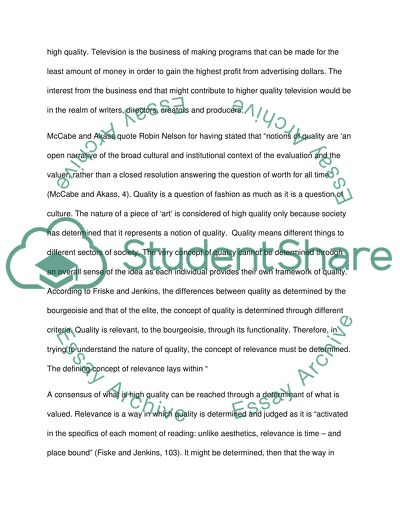Cite this document
(“The Nature Of Quality And The Categories Of Quality Television Essay”, n.d.)
Retrieved de https://studentshare.org/visual-arts-film-studies/1390712-the-nature-of-quality-and-the-categories-of-quality-television
Retrieved de https://studentshare.org/visual-arts-film-studies/1390712-the-nature-of-quality-and-the-categories-of-quality-television
(The Nature Of Quality And The Categories Of Quality Television Essay)
https://studentshare.org/visual-arts-film-studies/1390712-the-nature-of-quality-and-the-categories-of-quality-television.
https://studentshare.org/visual-arts-film-studies/1390712-the-nature-of-quality-and-the-categories-of-quality-television.
“The Nature Of Quality And The Categories Of Quality Television Essay”, n.d. https://studentshare.org/visual-arts-film-studies/1390712-the-nature-of-quality-and-the-categories-of-quality-television.


